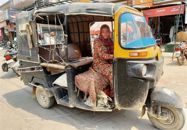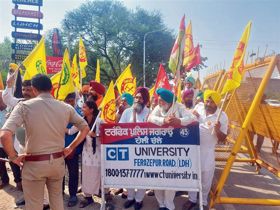Nitin Jain
“We should discuss the possibility of having staggered timings for different offices. Varying working hours could be a solution. Courts and government offices in Delhi open at 10 am, and if we have a gap of one or two hours, this will help reduce vehicular emissions immensely. Pressure on buses, autos and Metro during the peak hours could be reduced. Even working hours of business establishments could be regulated. The Centre can also take the universities along. If a child can go to school at 7 am, why can’t a graduate? The National Green Tribunal had said so in July 2015, while suggesting a plan to de-congest Delhi roads, especially during the morning and evening rush hours.
They rightly say what is sauce for the goose is sauce for the gander. Given the comparatively low-width roads in Chandigarh, bearing the load of high-density traffic choking the joint capital of Punjab and Haryana with vehicles, especially during the peak hours, the need for having staggered office and school hours is no less relevant as compared to Delhi. Some Metros in the country have been weighing this option for long. Singapore, where traffic congestion has been a major problem, was the first in the world to introduce staggered timings way back in 1975. The International Labour Office (ILO) also bats for similar practices.
In 2014, Union Railway Minister Suresh Prabhu had suggested staggered work timings in Mumbai and Kolkata to reduce pressure on the public transport system, especially the local trains. Staggered office and school timings mean that while some offices and schools may start the day at 8 am, others will do so at 9 am, and so on. As a natural corollary, the time when these offices and schools close for the day will also get staggered.
“The staggered timings scheme represents one way of easing the problems of traffic congestion and over-burdened public transport at peak hours. Instead of having all workers arrive and leave at the same time, different firms or even different branches of activity could adopt different starting and finishing timings. Traffic would thereby flow more smoothly, public transport would be utilised more rationally, and the physical and psychological strain would be lessened for all concerned,” reads the staggered timing proposal made by the International Labour Office.
In Chandigarh, which attracts a lot of intercity vehicular traffic from the neighbouring states every day, the coming up of new towns on the periphery like New Chandigarh (Mullanpur) and Nayagaon, adjoining the joint capital of Punjab and Haryana, and the planned expansion of the existing towns in the neighbouring states, created new travel corridors piling more pressure on the city roads. No gainsaying the fact that the growing intercity traffic and increased local traffic have come to upset the well defined hierarchy of roads in Chandigarh.
The survey conducted by RITES in 2008 had indicated that more than 1.52 lakh vehicles entered or left the Chandigarh urban complex on a typical working day. Both passenger and freight traffic across the city too are on the up. Madhya Marg has come to acquire the dubious distinction of being the worst affected road since it provides the shortest and direct link between the towns of New Chandigarh, Kharar and Baddi in Himachal Pradesh on the west, and with Manimajra, Panchkula, Panchkula extension, Pinjore, Kalka and Chandimandir Cantonment in Haryana on the east, and further to the towns of Parwanoo and Shimla in Himachal Pradesh.
The through traffic across the city adds to the congestion on the roads. An official study reveals that daily total inter-city passenger traffic in Chandigarh urban complex works out to 4.93 lakh trips (cars, two-wheelers, auto-rickshaws and buses), about 1.41 lakh of which comprise through trips accounting for 28.7 per cent of the total traffic volume. According to the survey, 11,062 of the 26,934 vehicles (LCV, trucks and MAV) are through and constitute about 41 per cent of total traffic. The findings of the survey underscore the need for a bypass road around the Chandigarh urban complex.
The study observed that the volume/capacity (V/C) ratio on all major corridors are expected to be well above ‘1’ by 2021 with business as usual scenario. Considering the high growth anticipated in the Chandigarh urban complex and nearby towns, the situation is likely to worsen in the days to come. It is high time the Chandigarh Administration weighed the option to stagger office and school timings.



























